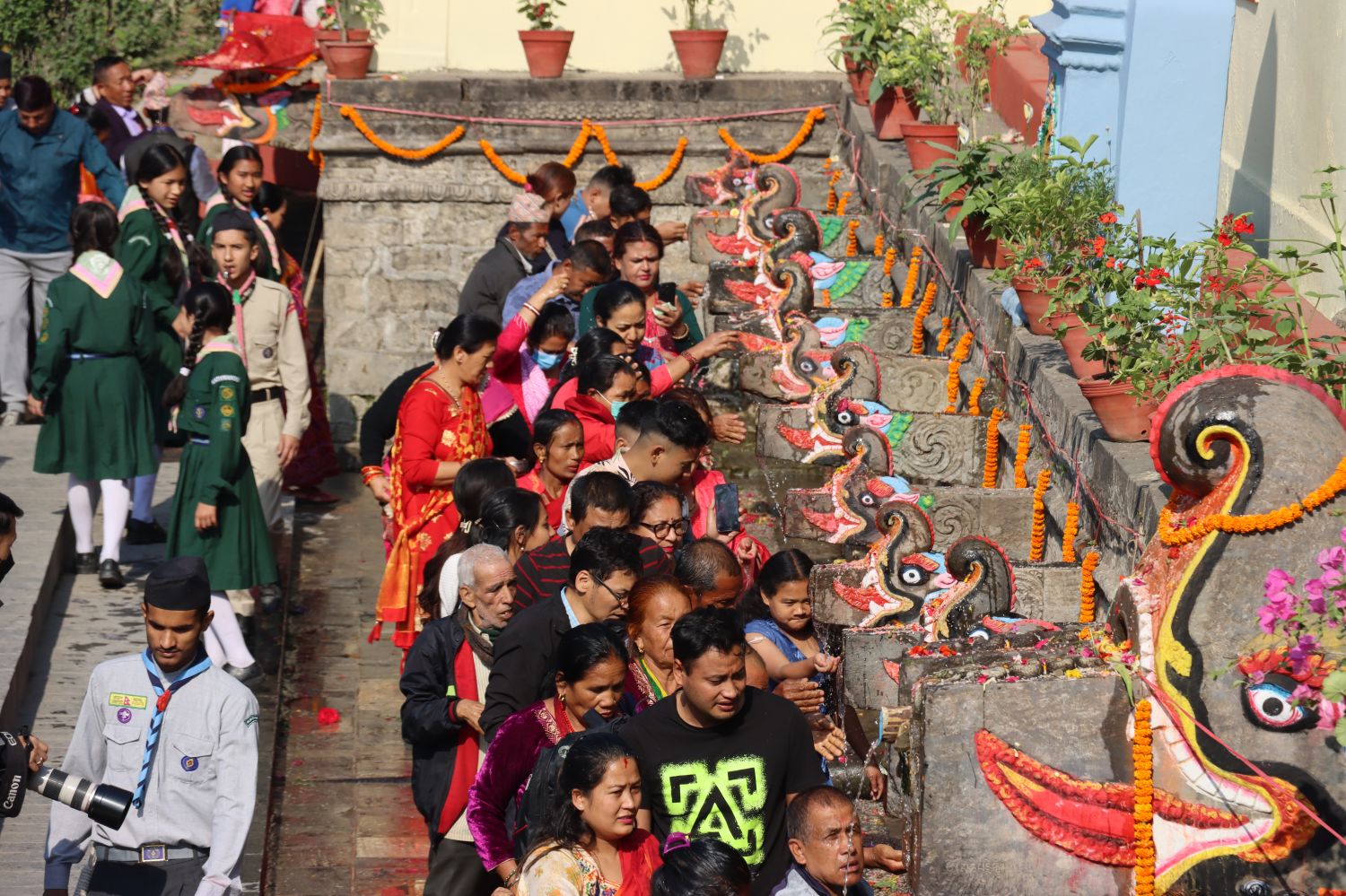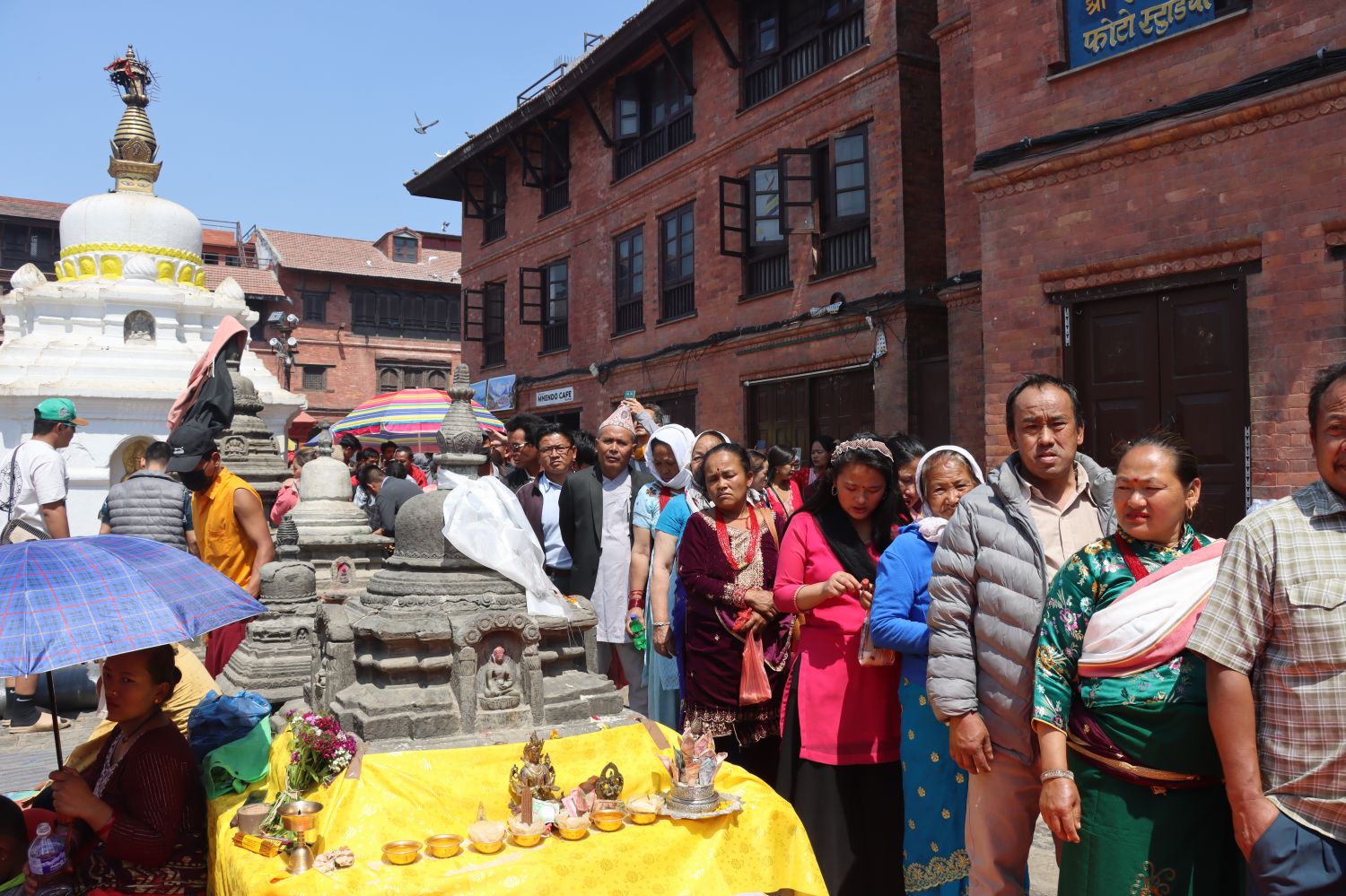
Devotees under Baais Dhara(22 Spouts) with optimum belief to cure their disease with its medicinal water. Photo: Bishal Shrestha, SATV
SATV, Kathmandu April 23: Nepalese observe BaaiseyDhaara Mela today on April 23rd at the west of Kathmandu Valley below the forest of Naagarjun. Devotees who went to visit Swayambhunath on yesterday's Temal Jatra, have a tradition to bathe in Baise Dhara, clean themselves and go to see Swayambhunath again today. Therefore, many devotees of Hindu and Buddhist faiths have thronged Baise Dhara today.
In fact, this historic place with 22 stone spouts is called Lhuti by the Newar community. In the forest of Nagarjuna, a kind of fruit called lhuti is found and the water flowing there is believed to be of medicinal importance because the juice of the fruit is mixed with it. For this reason, it is believed that bathing in Baisdhara water will cure skin diseases.
The Baisadhara fair, which has religious and social significance, takes place every year in a grand manner on the day of Chaitra Shukla Purnima. It is mentioned that this day is celebrated by the Newar community as Lhutipunhi.
It is said that since Goddess Mannadi was born on this day, if women bathe in Baisadhara, they will prosper. According to legend, Swayambhu Jyotirupa was born here when Vipasvi Buddha planted a lotus flower and chanted. In memory of this, Lhutipurnima is celebrated.
King Jayaprakash Malla, who introduced the world's smallest currency, built the Balaju Dhungedhara temple by keeping 21 dhara at the first place. Later in 1855 B.S., King Ran Bahadur Shah added one more spout making it 22 which forever named it Bais Dhara.
Then, King Mahendra in 2018 B.S., reformed it into a park which hence, is also known as Mahendra Park.
Thus, devotees carry a faith that Baisadhara posses the ability to remove all diseases which every year on the day of Chaitra Shukla Purnima, attract devotees here to wash away their diseases.











